Abstract
Photoperiodic control of testis growth in Passer domesticus (house sparrow) is mediated entirely by extraretinal photoreceptors in the brain. The eyes do not participate in photoperiodically significant photoreception. Removal of the pineal organ does not affect either the response to light or, to a first approximation, the process of recrudescence. The intensity of light reaching the retina and that reaching the extraretinal photoreceptor were varied independently. This technique will make it possible to study brain photoreception in species of birds that will not tolerate blinding. Extreme caution is necessary in the interpretation of brain lesion experiments in which reproductive function is modified, since photoreception by brain receptors of unknown anatomical location affects testicular state.
Full text
PDF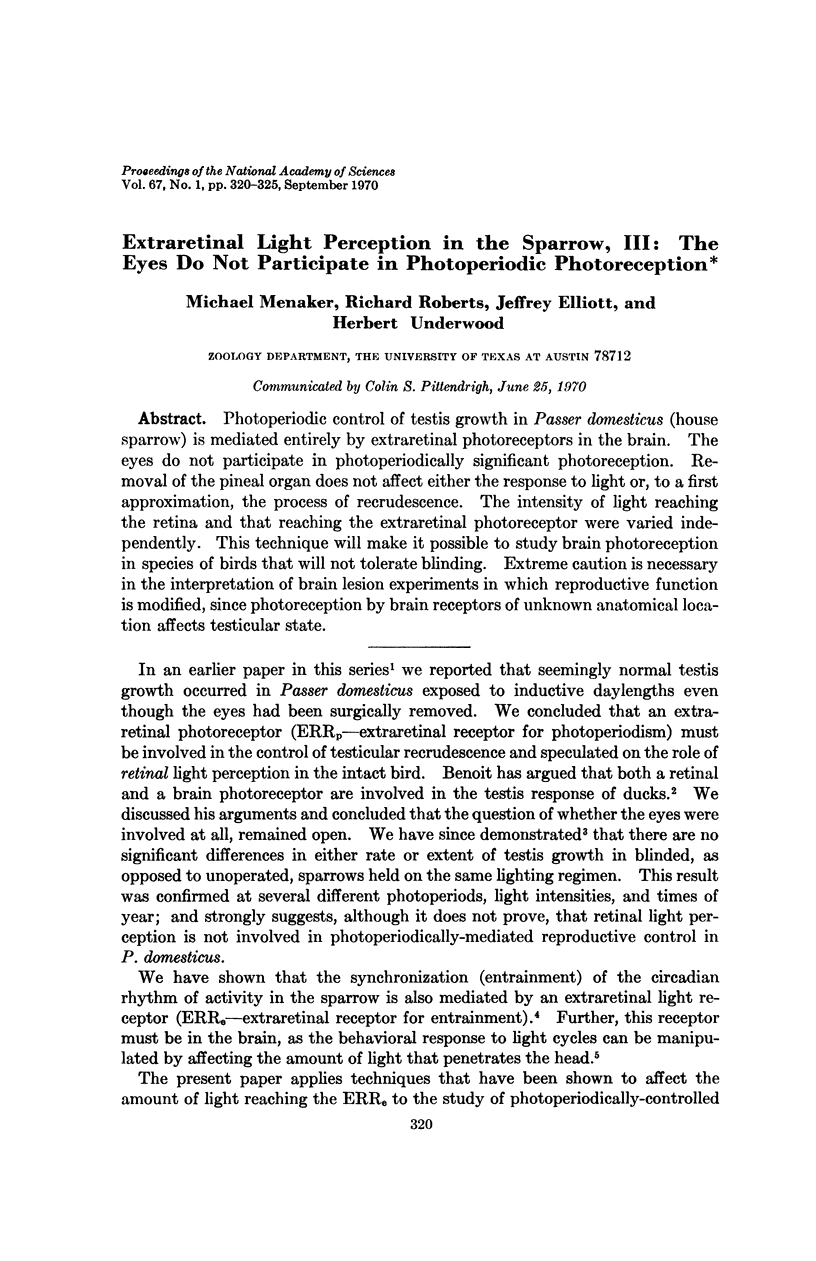
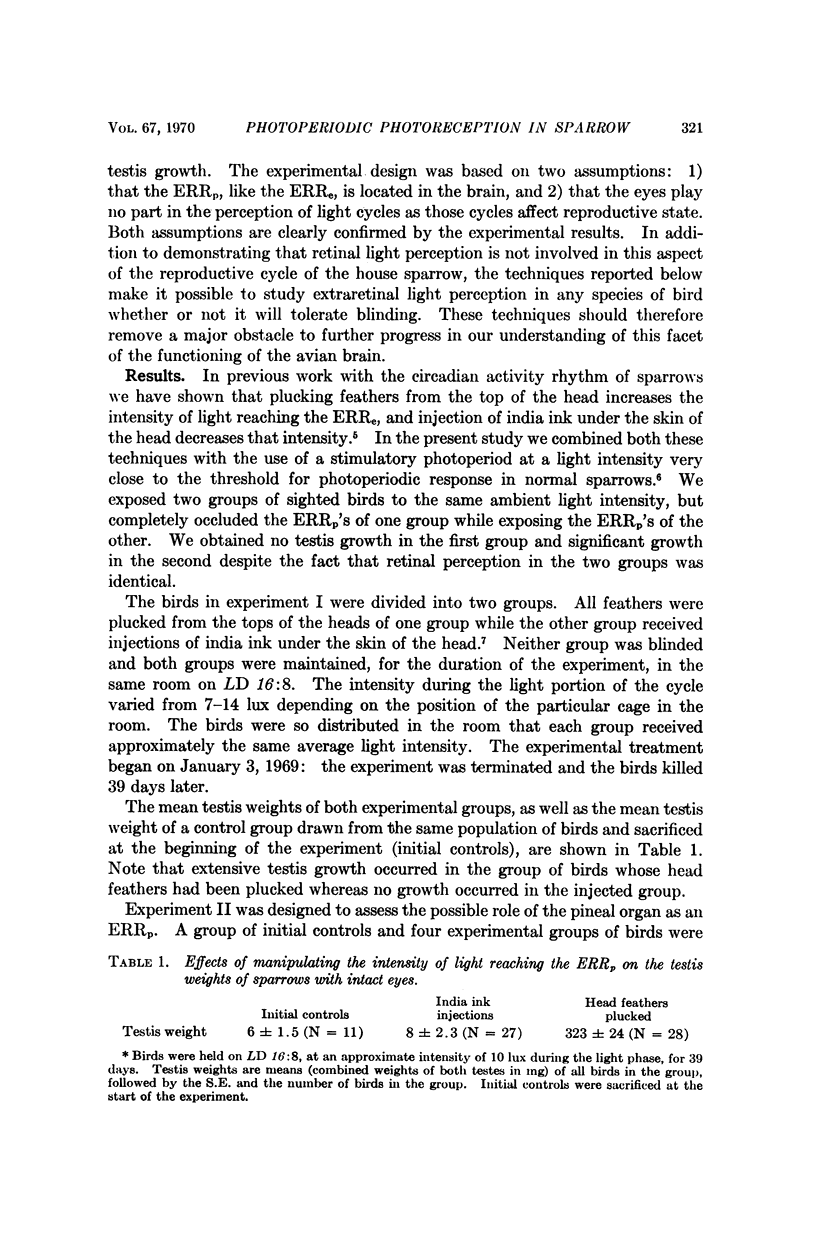
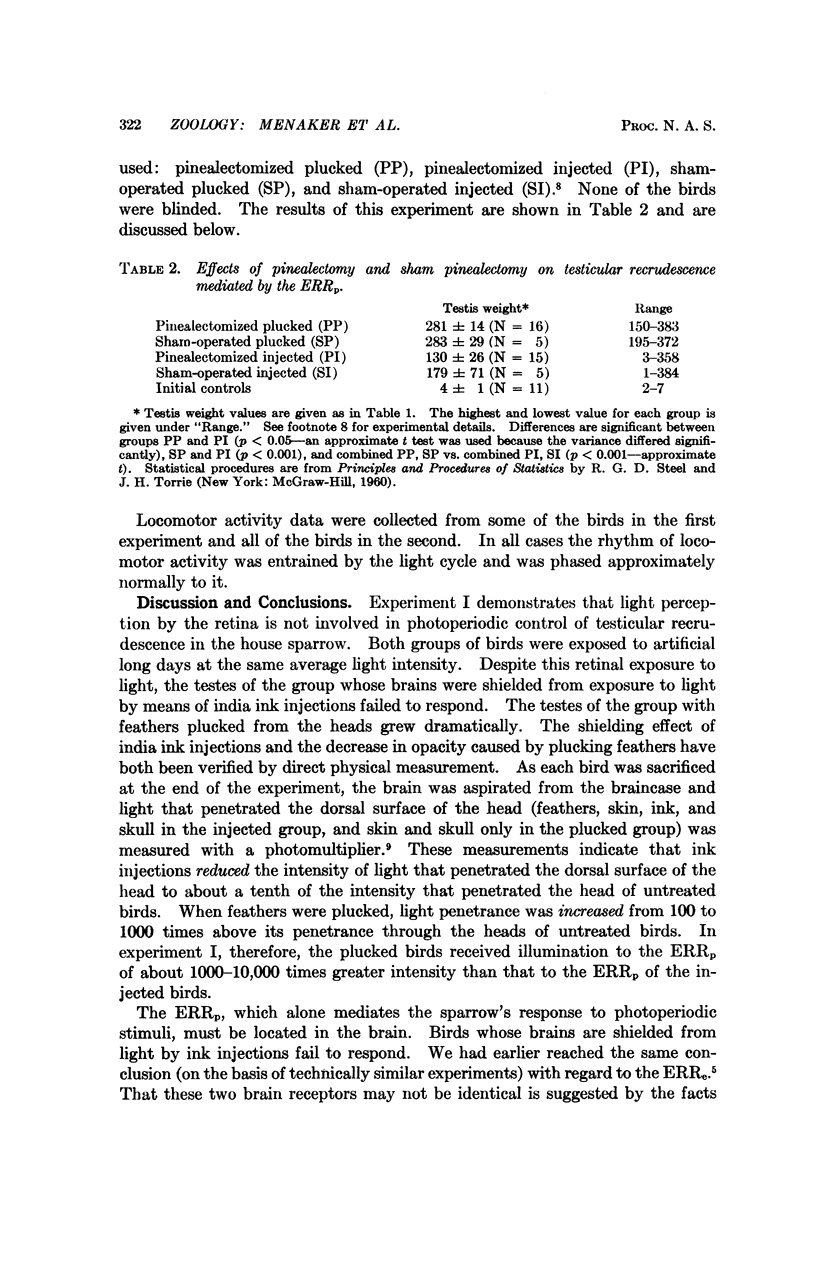

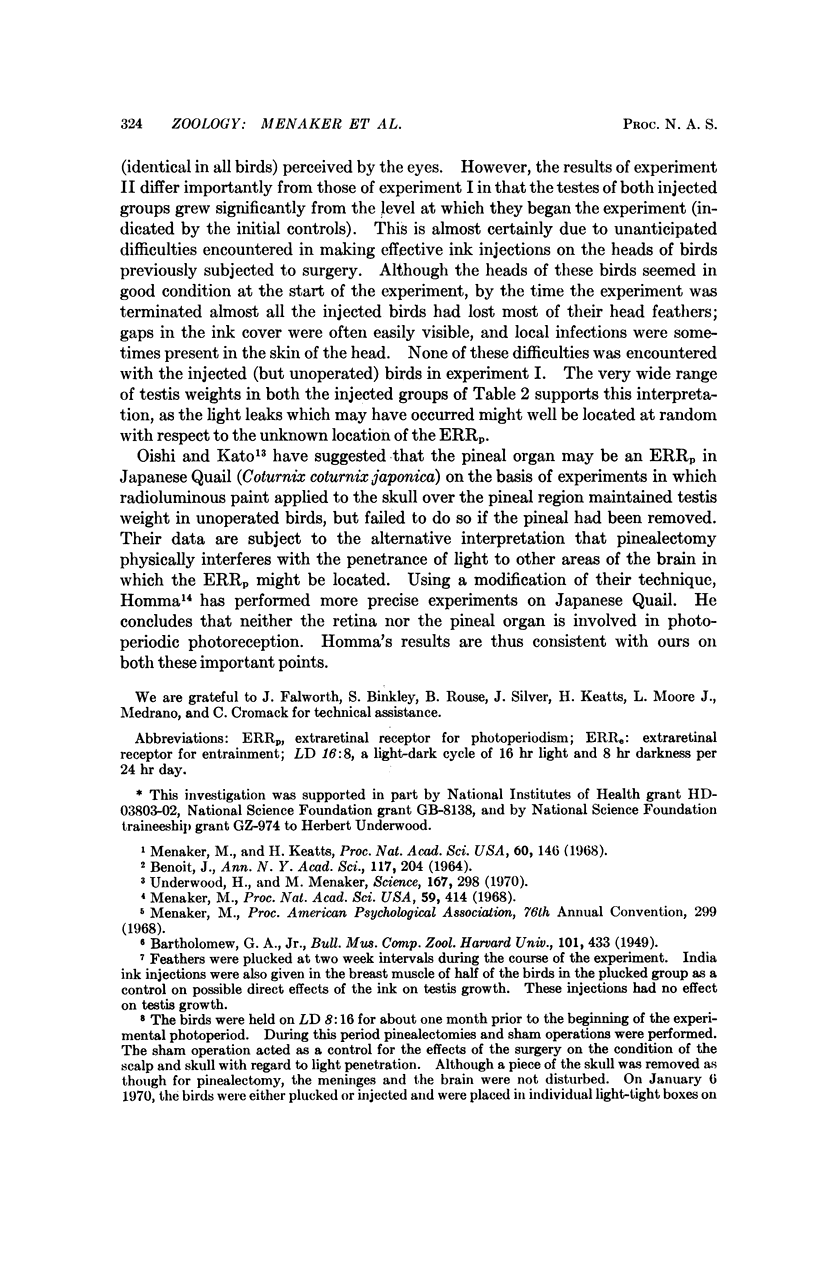
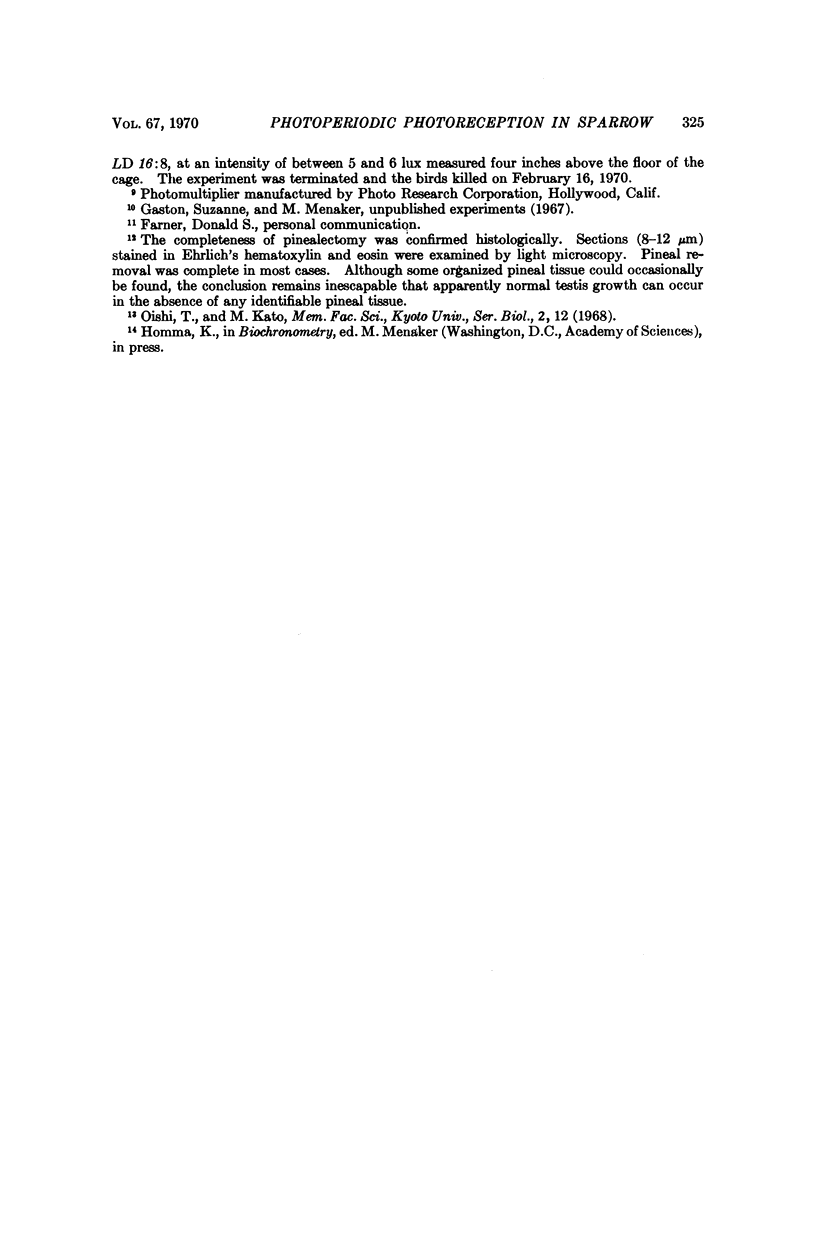
Selected References
These references are in PubMed. This may not be the complete list of references from this article.
- BENOIT J. THE ROLE OF THE EYE AND OF THE HYPOTHALAMUS IN THE PHOTOSTIMULATION OF GONADS IN THE DUCK. Ann N Y Acad Sci. 1964 Sep 10;117:204–216. doi: 10.1111/j.1749-6632.1964.tb48175.x. [DOI] [PubMed] [Google Scholar]
- Menaker M. Extraretinal light perception in the sparrow. I. Entrainment of the biological clock. Proc Natl Acad Sci U S A. 1968 Feb;59(2):414–421. doi: 10.1073/pnas.59.2.414. [DOI] [PMC free article] [PubMed] [Google Scholar]
- Menaker M., Keatts H. Extraretinal light perception in the sparrow. II. Photoperiodic stimulation of testis growth. Proc Natl Acad Sci U S A. 1968 May;60(1):146–151. doi: 10.1073/pnas.60.1.146. [DOI] [PMC free article] [PubMed] [Google Scholar]
- Underwood H., Menaker M. Photoperiodically significant photoreception in sparrows: is the retina involved? Science. 1970 Jan 16;167(3916):298–301. doi: 10.1126/science.167.3916.298. [DOI] [PubMed] [Google Scholar]


